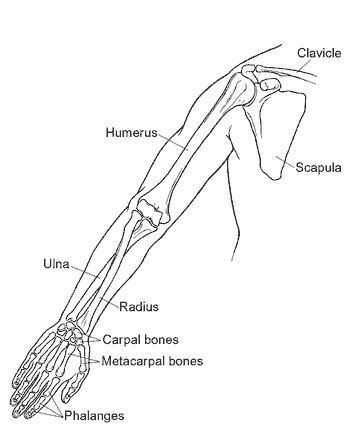Upper Extremity Anatomy
Published .

The upper extremity or arm is a functional unit of the upper body. It consists of three sections, the upper arm, forearm, and hand. It extends from the shoulder joint to the fingers and contains 30 bones. It also consists of many nerves, blood vessels (arteries and veins), and muscles. The nerves of the arm are supplied by one of the two major nerve plexus of the human body, the brachial plexus.
The upper extremity begins at the shoulder joint. This joint is commonly referred to as a ball-and-socket joint, although it is more correctly described as a ball-and-saucer joint. In contrast to the hip, the other ball-and-socket joint of the body, the socket is much shallower. This allows for less restriction of movement at the joint but compromises stability in the process. The elbow joint is referred to by many as a hinge joint. This is partially true but does not explain the ability to pronate and supinate the forearm at the elbow joint. The articulation of the radial head and the radial notch on the ulna allows for this motion. This creates what is called a “pivot” joint, allowing the movement of one bone on another. The wrist joint can be classified as an ellipsoidal or condyloid joint. There are also joints of the carpal bones, which are referred to as intercarpal joints. Even though they are synovial joints, they do not allow much movement. The interphalangeal joints are basic hinge joints.
